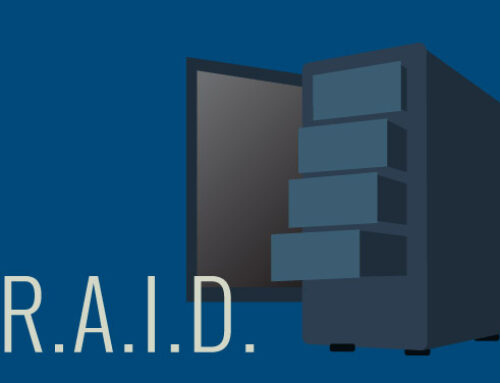In today’s digital business world, data is valuable and, in some cases, mission critical. As your business grows, the amount of data you’re processing increases as well. All indications point to explosive and exponential data growth in the coming years, thanks in part to the rise of video and Internet of Things. Developing a backup strategy for your data is important and it must be accessible, cost-effective, fast and scalable.
To protect your data, you also need to think beyond disaster recovery, which is just one piece of the puzzle. Consider the many kinds of data you process and store on a given day. Consider structured and unstructured data. In order to have a bulletproof backup strategy, you need to ensure all the data you need or use on a regular basis is backed up and secure.
Security is an essential part of keeping your data safe and protected from hackers. Ensuring your backup data is available if something were to happen is just as important. Regular testing of your backup data and processes and verification that the data is intact and accessible is a fundamental part of any backup strategy.
Backup Strategy Considerations
When planning your backup strategy, there are a few things to keep in mind to make sure that it meets your business needs and objectives.
Accessibility
The 3-2-1 rule (where the 1 is for 1 copy off-site) is well-known and time-tested. But as technology and storage moves to the cloud, this method has become outdated. What is more important than the physical location of the data backup is how accessible it is and how quickly you can access it. However, keeping a full data backup in a different physical location in the event of a natural disaster is still a sound investment.
Scalability
When determining scalability, it’s important to look at not just where you are now, but where you could be in the future. Consider how much the data you’re storing has grown over the last few years. And think about the growth objectives for your business and how much data you can expect to store in the coming years. No matter what kind of storage device or option you choose, it must be able to keep up with the growth of your business to be a worthwhile investment.
Speed
When considering speed, it’s critical to consider the speed at which you can store your data and the speed of data recovery and retrieval. In an emergency, whether a natural disaster or network outage, access to your backup data will keep your business up and running. Consider the time it will take to retrieve your data from the storage options available and determine if they meet your requirements.
Cost-effectiveness
Storage is getting cheaper with every passing year but deciding on the right storage option still comes down to the bottom line. Compare the cost of the backup options you are considering and test them against emergency data recovery scenarios. Think about the accessibility, scalability, and speed of each option and determine whether monetary costs outweigh the costs of time spent without your data.
Backup Storage Options
There are a variety of storage options available, from a USB external hard drive to the cloud. Using a combination of storage options and backing up your data to multiple places is the best way to create a bulletproof backup plan.
Flash Storage Arrays – Flash-based storage is generally network attached and is faster than disk-based storage options, with lower latency and less likelihood of failure. Consider scalable options for a more cost-effective solution.
External Hard Drives – Speeds are accelerating now that USB 3.0 is on the market, making this form of transportable storage a quick and easy option for most users. However, space is limited, so this is best used for smaller data sets or to back up individual machines.
The Cloud – The cloud is touted as being faster and cheaper than other storage options, with the additional benefit of not having to physically store data in a data center or server. Cloud providers offer multiple tiers of service and guarantee uptime. However, outages do happen, so relying on the cloud alone, or a single cloud provider, is not recommended.
Hard Disk Drives – Hard disk drives are still a viable and affordable option for backup storage. However, data recovery can be slow.
Legacy Options – If your business is still running a mainframe or relies on magnetic tape or optical media, you can use this for backup. Although there is a reason most have moved away from this technology. Aside from being outdated, slow access and retrieval times make this a less desirable backup storage option.
Software-defined Storage – Data management has been simplified to a policy-based solution. While this is a good method for managing your storage and backups, it is not a storage solution. You will still need to identify how and where you want to store your data.Determining the right storage option or options for your bulletproof backup strategy may take time, but it doesn’t need to be difficult. For more information on storage options, check out our free Guide to Storage ebook, for storage tips and strategies.




